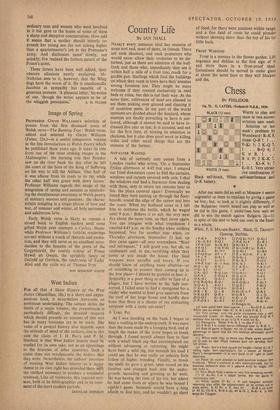Image of Spring PROFESSOR GWYN WILLIAMS'S selection of poems from
the. first thousand years of Welsh verse—The Burning Tree: Welsh verse. edited and selected by Gwyn Williams (Faber, 25s.)—is a useful companion volume to the fine Introduction to Welsh Poetry which he published three years ago. It takes its title from one of the most striking images in the Mabinogion: the burning tree that Peredur saw on the river bank the day after he left the court of the Sons of the King of Suffering on his way to kill the Addanc. 'One half of it was aflame from its roots to its tip, while the other half was green with dewy leaves.' Professor Williams regards this image of the integration of spring and autumn as symbolis- ing the simultaneous awareness in Welsh poetry of contrary seasons and passions: the charac- teristic mingling in a single phrase of love and war, of summer and winter, of holy sacrament and adulterous love.
Early Welsh verse is likely to remain a closed book to English readers until some gifted Welsh poet attempts a Cathay. Mean- while Professor Williams's faithful renderings are not without a touch of rhetoric and exalta- tion, and they will serve as an excellent Intro- duction to the laments of the poets of the Gogynfeirdd, the courtly ardour of Prince Hywel ab Owain, the sprightly fancy of Dafydd ap Gwilym, the tenderness of Tudor Aled and the virile wit of Thomas Prys.
JON MANCHIP WHITE


































 Previous page
Previous page